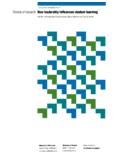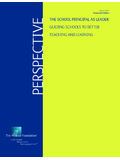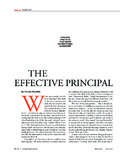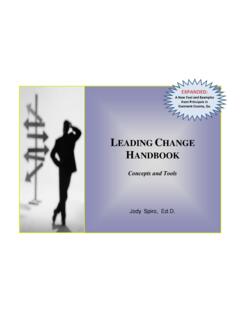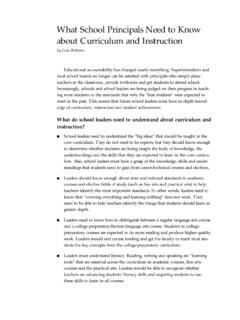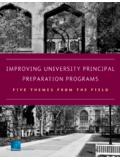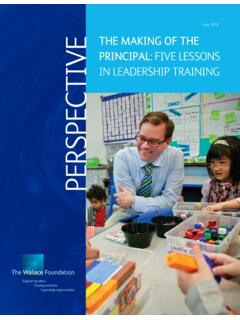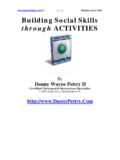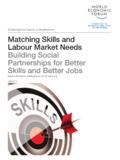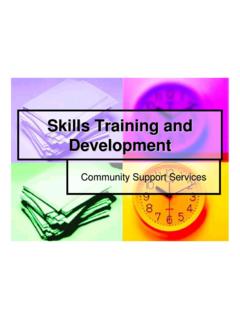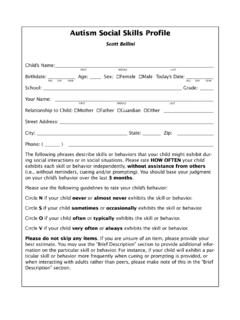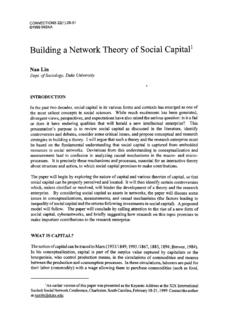Transcription of Social and Emotional Learning - The Wallace …
1 27 NUMBER 1 SPRING 2017 Social and Emotional Learning 3 Social and Emotional Learning : Introducing the Issue by Stephanie M. Jones and Emily J. Doolittle 13 Social and Emotional Learning as a Public Health Approach to Education by Mark T. Greenberg, Celene E. Domitrovich, Roger P. Weissberg, and Joseph A. Durlak 33 SEL Interventions in Early Childhood by Megan M. McClelland, Shauna L. Tominey, Sara A. Schmitt, and Robert Duncan 49 Promoting Social and Emotional Competencies in Elementary School by Stephanie M.
2 Jones, Sophie P. Barnes, Rebecca Bailey, and Emily J. Doolittle 73 Social and Emotional Learning Programs for Adolescents by David S. Yeager 95 SEL-Focused After-School Programs by Noelle Hurd and Nancy Deutsch 117 Social and Emotional Learning and Equity in School Discipline by Anne Gregory and Edward Fergus 137 Social and Emotional Learning and Teachers by Kimberly A. Schonert-Reichl 157 Social - Emotional Assessment, Performance, and Standards by Clark McKownSocial and Emotional Learning : Introducing the IssueVOL.
3 27 / NO. 1 / SPRING 2017 3 Social and Emotional Learning :Introducing the IssueStephanie M. Jones and Emily J. DoolittleStephanie Jones is the Marie and Max Kargman Associate Professor in Human Development and Urban Education at Harvard Graduate School of Education. Emily J. Doolittle is team lead for Social behavioral research in the National Center for Education Research, Institute of Education Sciences, US Department of increasingly suggests that Social and Emotional Learning (SEL) matters a great deal for important life outcomes like success in school, college entry and completion, and later earnings.
4 This research also tells us that SEL can be taught and nurtured in schools so that students increase their ability to integrate thinking, emotions, and behavior in ways that lead to positive school and life outcomes. Although the term Social and Emotional Learning has been around for 20 years, we ve recently seen a rapid surge in interest in SEL among parents, educators, and policymakers. For example, the Collaborative for Academic, Social , and Emotional Learning (CASEL) is supporting 10 large school districts and 45 smaller ones through its Collaborating Districts Initiative as they begin to incorporate a variety of SEL programs and practices into their schools.
5 CASEL also recently launched a Collaborating States Initiative to support states as they develop policies, standards, and guidelines for SEL in schools. All 50 states have SEL standards in place at the preschool level, and four (Illinois, Kansas, West Virginia, and Pennsylvania) have SEL standards for kindergarten through 12th grade. And the Aspen Institute recently launched a National Commission on Social , Emotional , and Academic Development to explore how schools can fully integrate SEL into policies and instruction that have traditionally emphasized academics.
6 We also know that teachers believe SEL skills can be taught, although they may not always know the best way to do so in their What s in a Name?SEL goes by many other names. Common terms for this set of skills include character education, personality, 21st-century skills, soft skills, and noncognitive skills, just to name a few. Each label draws from a slightly different theoretical perspective and draws upon a different set of research, and each has its own related fields and disciplines. In this issue of Future of Children, we call the domain Social and Emotional Learning for two reasons.
7 First, recent market research indicates that this is a familiar and preferred term among policymakers, practitioners, and Second, the term emphasizes Learning and growth providing a more positive framing than terms like noncognitive or soft skills. By emphasizing Learning and growth, the term SEL is Stephanie M. Jones and Emily J. Doolittle4 THE FUTURE OF CHILDREN also consistent with schools fundamental mission to support academic Learning and engaged citizenship. But what are we talking about when it comes to SEL?
8 Researchers, educators, and policymakers alike have trouble pinning down exactly what s included in this broad domain and what isn t. The popular press has highlighted a wide array of skills, such as grit, empathy, growth mindset, Social skills, and more. At its core, SEL involves children s ability to learn about and manage their own emotions and interactions in ways that benefit themselves and others, and that help children and youth succeed in schooling, the workplace, relationships, and To effectively manage emotions and Social interactions requires a complex interplay of cognitive skills, such as attention and the ability to solve problems; beliefs about the self, such as perceptions of competence and autonomy.
9 And Social awareness, including empathy for others and the ability to resolve conflicts. The SEL skills that have been identified are vast in number and varied in nature, and they stem from many different yet complementary theoretical perspectives. This diversity has both positive and negative consequences. On the one hand, it has pushed researchers and practitioners to search for the best ways to support healthy development and positive life outcomes. On the other hand, it has complicated our understanding of the these challenges, or perhaps because of them, interest in SEL has exploded over the past few years.
10 That s why we decided to produce an issue of Future of Children that focuses on developing SEL skills in our schools. The articles published here collectively address developmental changes and intervention approaches from preschool through secondary school, as well as the related out-of-school context of after-school programming and major policy issues in education like teacher preparation, school discipline, and school-based assessment for intervention and accountability purposes. Why This Issue on Social and Emotional Learning ?

